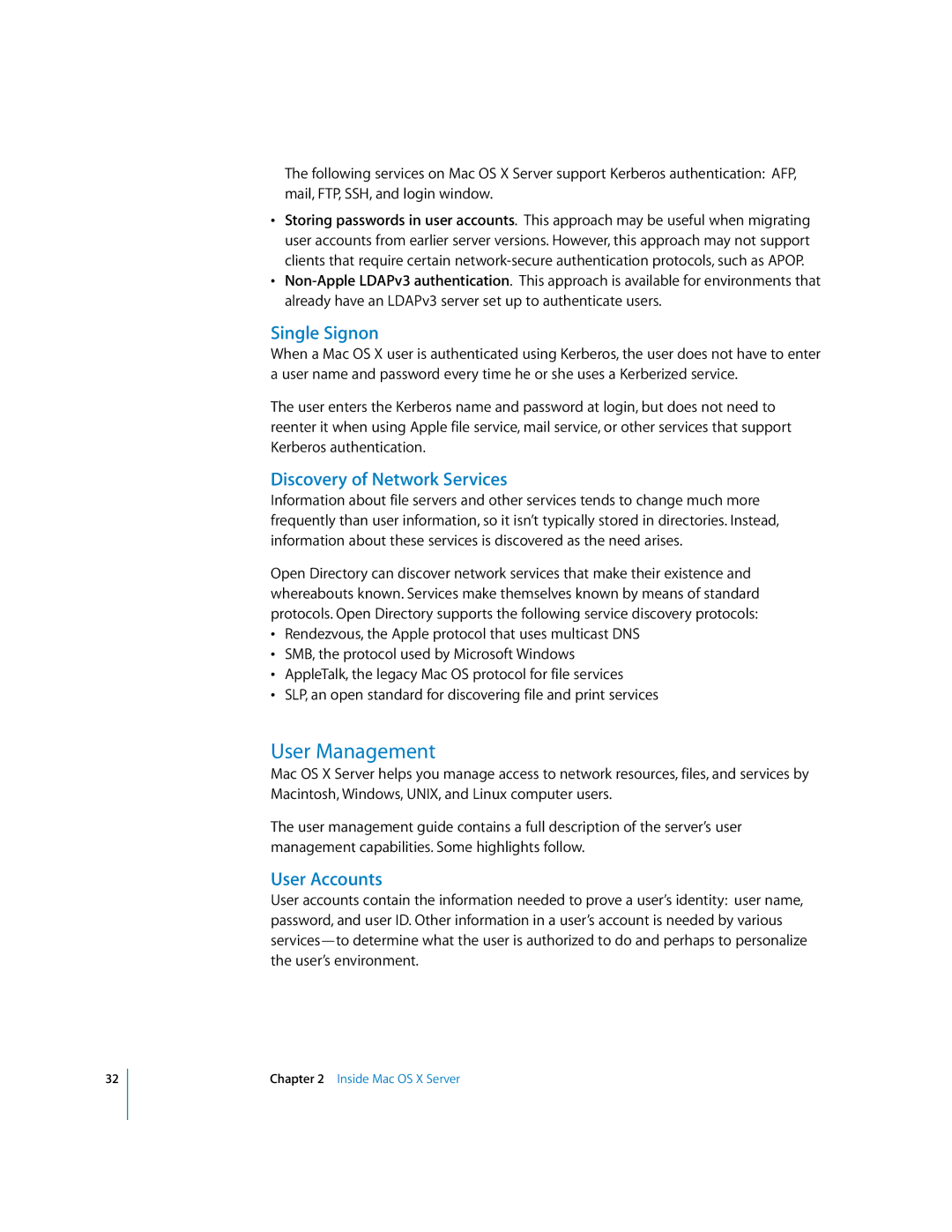
32
The following services on Mac OS X Server support Kerberos authentication: AFP, mail, FTP, SSH, and login window.
•Storing passwords in user accounts. This approach may be useful when migrating user accounts from earlier server versions. However, this approach may not support clients that require certain
•
Single Signon
When a Mac OS X user is authenticated using Kerberos, the user does not have to enter a user name and password every time he or she uses a Kerberized service.
The user enters the Kerberos name and password at login, but does not need to reenter it when using Apple file service, mail service, or other services that support Kerberos authentication.
Discovery of Network Services
Information about file servers and other services tends to change much more frequently than user information, so it isn’t typically stored in directories. Instead, information about these services is discovered as the need arises.
Open Directory can discover network services that make their existence and whereabouts known. Services make themselves known by means of standard protocols. Open Directory supports the following service discovery protocols:
•Rendezvous, the Apple protocol that uses multicast DNS
•SMB, the protocol used by Microsoft Windows
•AppleTalk, the legacy Mac OS protocol for file services
•SLP, an open standard for discovering file and print services
User Management
Mac OS X Server helps you manage access to network resources, files, and services by Macintosh, Windows, UNIX, and Linux computer users.
The user management guide contains a full description of the server’s user management capabilities. Some highlights follow.
User Accounts
User accounts contain the information needed to prove a user’s identity: user name, password, and user ID. Other information in a user’s account is needed by various
Chapter 2 Inside Mac OS X Server
